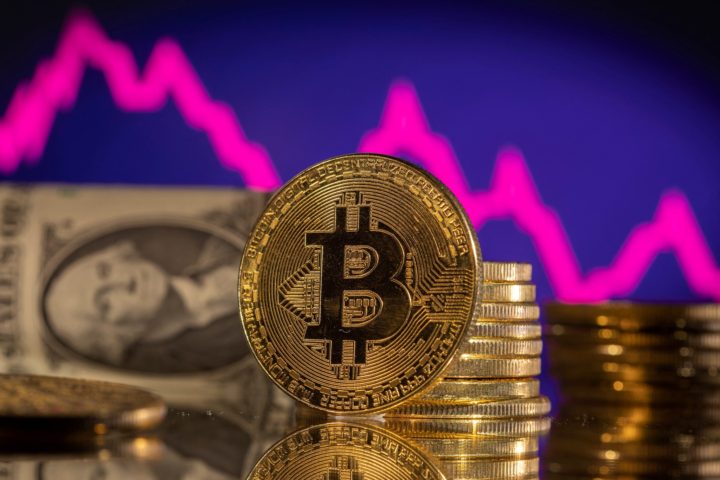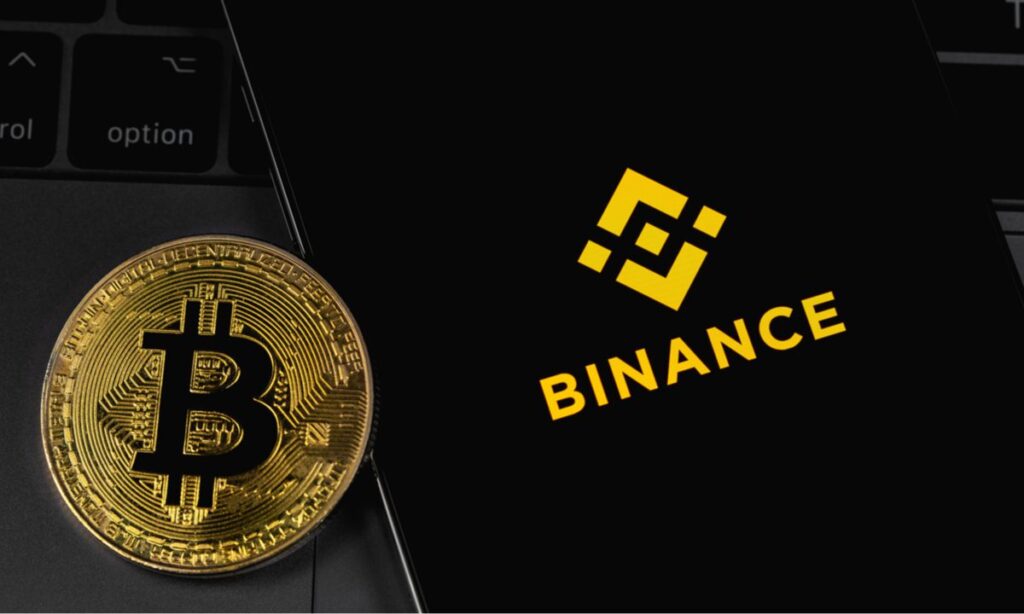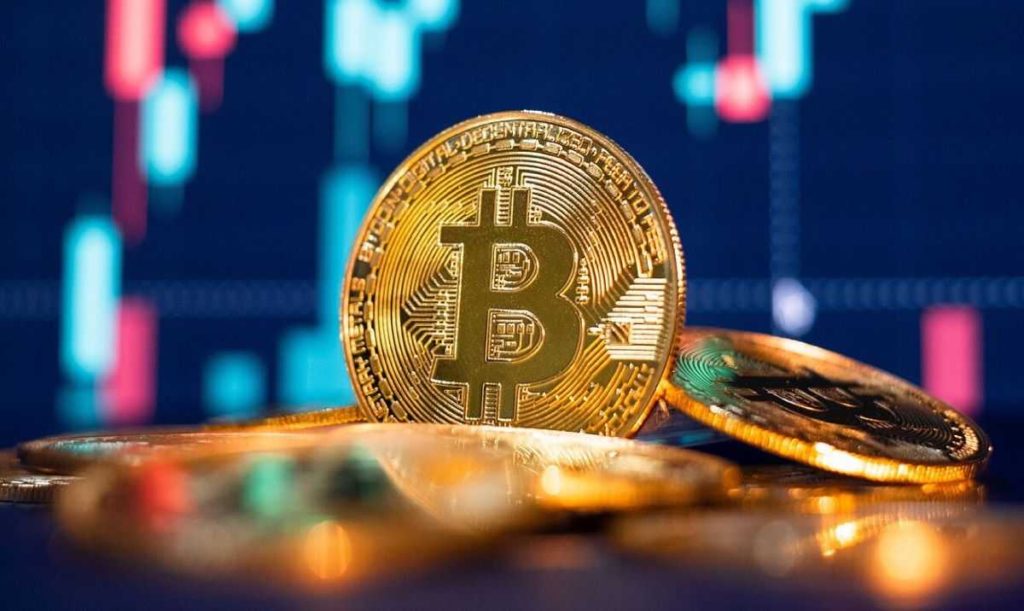The United Kingdom’s National Crime Agency (NCA) has recently established a specialized digital assets team under the Complex Financial Crime Team (CFCT) to combat cryptocurrency-related offenses, and they are now in the process of hiring two blockchain investigators for this crucial task.
The main responsibility of these investigators will be to oversee intricate investigations dealing with cryptocurrency and digital assets, particularly from the perspective of the Proceeds of Crime Act (POCA).
The POCA pertains to the seizure and redirection of criminal funds towards benefiting the community, making it an essential component in the fight against financial crimes involving crypto.
The NCA is specifically looking for candidates who are already part of the police staff and hold the certification of an accredited financial investigator (AFI).
In addition to this requirement, expertise in blockchain analysis, criminal investigation, and a comprehensive understanding of relevant legislation will be necessary for potential candidates.
The selected candidates can anticipate a competitive salary, with an approximate amount of 47,380 British pounds ($61,076.37), in addition to other civil service benefits.
In a significant move towards addressing cyber incidents involving cryptocurrencies like Bitcoin, the NCA established the NCCU Crypto Cell in January 2023.
READ MORE: Crypto Lending Firm Faces Service Disruption as Assets Seized by Regulator
This dedicated unit is aimed at intensifying regulatory efforts concerning crypto assets in the UK, aligning with the government’s determination to eradicate illicit funds within the nation.
The emphasis on eliminating “dirty money” highlights the seriousness with which the UK government views the potential risks associated with cryptocurrency-related crimes.
Chris Lewis-Evans, the director of NCA infrastructure investigations, expressed enthusiasm about this employment opportunity.
He described it as a thrilling chance to be part of a team at the forefront of safeguarding the UK against cybercrime, highlighting the vital role that these blockchain investigators will play in securing the country’s financial landscape.
In conclusion, the NCA’s formation of a specialized digital assets team and their pursuit of blockchain investigators signifies the growing importance of addressing crypto crimes in the UK.
As cryptocurrencies continue to evolve and gain widespread adoption, regulatory agencies are recognizing the need for expertise in investigating and combatting illicit activities involving digital assets.
By bringing in skilled professionals to tackle these challenges head-on, the NCA aims to bolster its efforts in protecting the UK’s financial integrity and overall security.
Other Stories:
Former FTX CEO Accepts Gag Order Amidst Trial
Ripple CEO Brad Garlinghouse Criticizes SEC’s ‘Regulation by Enforcement’
NBA star Jimmy Butler has requested his dismissal from a class-action lawsuit that targets celebrities allegedly involved in promoting unregistered securities by Binance.
Butler’s lawyers, in a filing on July 24, argued that the three tweets he appeared in, which promoted Binance between February 2 and February 13, 2022, did not mention any unregistered securities.
Therefore, they contended that these tweets could not have contributed to the promotion of such securities.
The lawyers emphasized that Butler’s tweets were not recommendations for investments; instead, they served as a cautionary message about celebrity crypto endorsements.
He urged potential Binance customers to conduct their own research before making any crypto investments.
The lawsuit, filed in March, named Butler along with Binance, its CEO Changpeng “CZ” Zhao, and YouTubers Graham Stephan and Ben Armstrong (also known as BitBoy Crypto).
READ MORE: Ripple CEO Brad Garlinghouse Criticizes SEC’s ‘Regulation by Enforcement’
Binance had engaged Butler, a prominent player for the NBA’s Miami Heat, in 2022 to promote the exchange in the lead-up to that year’s Super Bowl.
His promotional efforts began with a video promoting a free nonfungible token (NFT) collection from Binance on February 2, 2022, followed by two additional tweets on February 7 and February 13.
In the video sponsored by Binance, Butler advised viewers, “You’re going to hear some of the biggest names telling you to get into crypto, but they don’t know you or your finances.”
He added, “Binance and I are here to tell you, trust yourself and, of course, do your own research.”
One of Butler’s tweets for the exchange encouraged users to use the hashtag “#CryptoCelebAlert” during the Super Bowl for a chance to win one of 2,222 NFTs.
Another video featured Butler once again urging his followers to trust themselves and conduct thorough research into cryptocurrencies.
In a revised complaint on June 27, it was alleged that Butler’s statements were deceptive as they were presented alongside the promotion of Binance’s free NFTs and exchange platform.
In addition to Butler’s motion, Binance, Zhao, and Armstrong have also filed motions to dismiss the class-action lawsuit.
In an earlier development, finance YouTuber Graham Stephan was dismissed from the suit on June 15.
Other Stories:
Crypto Lending Firm Faces Service Disruption as Assets Seized by Regulator
On July 25, the United States Senate displayed overwhelming support for a bipartisan legislation that will make it mandatory for U.S. companies to disclose any investments made in Chinese technologies.
The amendment, which garnered a remarkable vote of 91 to 6, is an addition to the National Defense Authorization Act (NDAA) and is expected to be put into effect later this year, presumably in 2023.
Under this amendment, U.S. companies will be required to inform federal agencies about their outbound investments in Chinese technologies, specifically targeting semiconductors used in artificial intelligence (AI) applications.
The amendment was jointly proposed by Democratic Senator Bob Casey and Republican Senator John Cornyn, based on a version of the Outbound Investment Transparency Act that seeks to address the risks associated with U.S. foreign investments in countries like China.
Senator Casey expressed his strong support for the amendment, emphasizing the necessity of having outbound investment notification to gain a clear understanding of the critical technology being transferred to potential adversaries through these capital flows.
READ MORE: Former FTX CEO Accepts Gag Order Amidst Trial
He further stated that such information would enable the United States to strategically “take control” of its economic future.
The current version of the bill is expected to pass through the Senate by the end of the week, after which it will be reconciled with a related bill that was previously passed in the House of Representatives. Eventually, the final version will be sent to President Joe Biden’s desk for approval.
This legislation comes amid an ongoing tit-for-tat relationship between the U.S. and China concerning emerging technologies.
Notably, on June 28, U.S. officials revealed plans to potentially restrict the computing power in semiconductor chips to limit the availability of AI chips in the Chinese market.
Responding to this, the Chinese government, on July 3, announced its own intentions to impose export controls on metals essential for semiconductor manufacturing.
Continuing this trajectory, on July 5, the U.S. reportedly considered placing controls on the level of access that Chinese companies would have to U.S.-based cloud computing services, impacting products offered by prominent providers such as Amazon Web Services and Microsoft.
These developments reflect the ongoing geopolitical tension surrounding technology and indicate how both nations are taking measures to safeguard their interests and maintain control over critical sectors in the ever-evolving landscape of global innovation.
Other Stories:
Ripple CEO Brad Garlinghouse Criticizes SEC’s ‘Regulation by Enforcement’
Worldcoin Sparks Controversy As It Launches Ecosystem Token
Crypto Lending Firm Faces Service Disruption as Assets Seized by Regulator
Celsius, a top cryptocurrency lender in 2021, collapsed due to inherent business model flaws, regulatory investigations, and legal issues.
Once managing $25 billion in assets for 1.7 million customers, the company’s downfall started in 2022’s bear market, particularly after Terra’s implosion in May.
Celsius’ dependency on its CEL token and high staking rewards left it vulnerable, and when ties to Terra were revealed, the CEL price plummeted.
This prompted the company to move funds off-platform and freeze user withdrawals.
By July 2022, Celsius filed for Chapter 11 bankruptcy with $2.7 billion in debt.
The same month, securities regulators from five U.S. states, including the U.S. Justice Department, CFTC, FTC, and SEC, initiated investigations into the company and its CEO, Alex Mashinsky. Mashinsky resigned in September amidst rumors of planning to escape the U.S.
The first serious allegation against Celsius and Mashinsky emerged in 2023, with the CFTC alleging violations of U.S. regulations and investor deceit.
READ MORE: Worldcoin Sparks Controversy As It Launches Ecosystem Token
Shortly after, the SEC accused them of fraudulent and unregistered billion-dollar offers, leading the FTC to levy a $4.7 billion fine and cease Celsius’ trading. The Justice Department charged Mashinsky with multiple fraud counts.
Mashinsky and former Chief Revenue Officer, Roni Cohen-Pavon, also faced charges of manipulating CEL prices while selling their tokens at inflated prices.
However, the Southern District of New York’s United States attorney stated that Celsius would not face charges after agreeing to accept responsibility and assist in fund recovery for customers.
Mashinsky was arrested but subsequently released on a $40 million bond.
The Celsius debacle has put other crypto companies under regulatory scrutiny. Binance and Coinbase are facing similar lawsuits.
The increased regulatory enforcement has sparked debates about clarity in regulations. Legal experts suggest that these legal repercussions could improve the crypto industry by dissuading fraudulent practices.
However, regulators must also safeguard the rights of both crypto companies and their customers.
Crypto industry advocates argue that persecuting bad actors is a positive step, creating an environment where users can trust the safety of their assets.
Other Stories:
Ripple CEO Brad Garlinghouse Criticizes SEC’s ‘Regulation by Enforcement’
Crypto Lending Firm Faces Service Disruption as Assets Seized by Regulator
Bitcoin (BTC) faced the threat of further declines over the weekend as the July 23 candle close approached.
The cryptocurrency was trading below $30,000, which had now become an intraday resistance level, according to data from Cointelegraph Markets Pro and TradingView.
On July 22, BTC briefly dipped to $29,640 before recovering by the daily close, but traders remained concerned about the possibility of more downside movement. Crypto Tony, a popular trader, warned his Twitter followers about a double top rejection on the BTC chart and highlighted two critical psychological levels to watch out for – $25,000 and $20,000.
Another trader and analyst, Nebraskan Gooner, concurred with the idea of further downward price action for BTC, pointing out that it had fallen below the narrow range that had been in play for the past month.
As for the future direction of Bitcoin’s price, some traders were waiting for increased market volatility, but they were hesitant to predict whether it would break out or break down to test earlier-year levels.
Toni Ghinea, a well-known trader and analyst, anticipated a decisive move in the recent narrow price range in the coming week.
READ MORE: Report Reveals Alarming Surge in Cryptocurrency Use by ISIS Terrorists
He identified $31,000 to $32,000 as a resistance area and $29,000 as a support level, advising caution if a break above the resistance occurs.
Ghinea warned against becoming overly optimistic in such a scenario as it could still be near the range high.
Conversely, a potential decline could see BTC testing the 27,000 to 28,000 range, with the $19,000 to $23,000 zone still being a possibility.
Amidst these technical considerations, market participants were bracing for a crucial week with the Federal Open Market Committee (FOMC) meeting on the horizon.
The FOMC, responsible for setting interest rates in the United States, could provide significant volatility indicators as it makes decisions on monetary policy.
Market sentiment leaned heavily toward predicting a return to rate hikes, with odds standing at 99.2% as of July 23, according to CME Group’s FedWatch Tool.
Overall, Bitcoin’s price remained under pressure as traders closely monitored key levels and events that could influence the cryptocurrency’s trajectory in the near future.
Other Stories:
Controversial Proposal Sparks Fierce Debate Among Members of Solana-Based Liquidity Network
Terraform Labs Faces Uphill Battle Amidst Allegations, New CEO Discusses Road Ahead
Crypto payment platform Alphapo suffered a major security breach on July 22, resulting in the loss of at least $31 million from its hot wallets, comprising cryptocurrencies Ether (ETH), TRON (TRX), and Bitcoin (BTC). The value of the stolen assets is likely to be even higher due to uncertainties surrounding the number of stolen Bitcoins.
According to security experts, the attack was executed by siphoning funds from Alphapo’s hot wallets on the Ethereum network, converting them into ETH, and then moving them to the Avalanche and Bitcoin blockchains.
The breach may have been facilitated by a leak of private keys, although investigations are ongoing to determine the full extent and cause of the hack.
Alphapo is a prominent payment processor offering instant transactions in over 30 digital assets, along with fiat currency balances.
It has gained recognition as the gateway for various gambling platforms, including HypeDrop, Ignition, and Bovada.
Following the security incident, one of Alphapo’s clients, HypeDrop, temporarily suspended crypto transactions due to the hack’s impact on their operations.
The mystery box platform assured its users that their funds are safe but acknowledged the disruption in processing deposits and withdrawals. HypeDrop expects normal operations to resume once the cryptocurrency provider resolves the issue.
READ MORE: 2023 Ranking: 4 Best Crypto Projects To Buy
Despite the breach, Alphapo’s spokesperson declined to comment on the specific details of the incident.
However, they did confirm that deposits and withdrawals are being gradually reinstated for certain batches of currencies.
Users were urged not to send funds to old deposit addresses and were assured that any funds from such deposits would undergo additional verification.
In a separate security-related event, decentralized finance protocol Conic Finance faced two attacks in quick succession over the past few days.
The first attack resulted in the theft of $3.26 million worth of Ether, with the majority of the stolen funds sent to a single Ethereum address.
Shortly after, a second incident occurred in which the attacker employed a variant of a sandwich attack to target the protocol’s pools, yielding them around $300,000.
Both Alphapo and Conic Finance incidents highlight the ongoing risks and vulnerabilities in the cryptocurrency space.
Security experts and blockchain communities remain vigilant as they continue to develop and implement measures to protect users’ assets from potential threats.
Other Stories:
Report Reveals Alarming Surge in Cryptocurrency Use by ISIS Terrorists
Controversial Proposal Sparks Fierce Debate Among Members of Solana-Based Liquidity Network
Terraform Labs Faces Uphill Battle Amidst Allegations, New CEO Discusses Road Ahead
Bitcoin (BTC) has been struggling to break above the resistance at $31,000, but it has managed to maintain support at $29,500.
This suggests that the price needs a catalyst to break out of its current range.
The upcoming Federal Reserve meeting on July 25 and 26 is an important event to monitor.
There’s a high probability of a 25 basis point rate hike, which may not cause an immediate market reaction as it seems to have been priced in.
However, any unexpected move by the Fed could push the price of Bitcoin out of its range.
Analysts expect the range to break soon, but they are divided on the direction of the breakout.
A downside break could lead to a significant decline, with some projecting a fall to around $20,000.
On the positive side, if Bitcoin’s price moves higher, certain altcoins could attract buyers.
Now, let’s take a look at the charts of the top five cryptocurrencies that may turn positive in the coming days.
For Bitcoin, it remains below the 20-day exponential moving average ($30,036) but has support at the 50-day simple moving average ($28,979).
This indicates that the bulls are not giving up, and their repeated efforts to prevent a decline might attract buyers.
If the price breaks above the 20-day EMA, it could rally towards the resistance at $31,000 and even open the path for a potential rally to $40,000.
Conversely, a drop below the 50-day SMA may suggest a bearish comeback, leading to a slump towards the support at $24,800.
Next, Chainlink (LINK) has been trading in a range between $5.50 and $9.50, with bulls managing to keep the price within this range.
The current upward momentum, with both moving averages turning up and the RSI in positive territory, indicates that bulls are in control.
If buyers push the price above $8.80, the pair may soar towards $9.50. On the downside, a break below $7.05 might lead to a drop towards $6.50.
Filecoin (FIL) is attempting to form an inverse head and shoulders pattern, which will complete on a break and close above the neckline.
READ MORE: Controversial Proposal Sparks Fierce Debate Among Members of Solana-Based Liquidity Network
The moving averages sloping upwards and the RSI in positive territory indicate a potential upside.
If the price breaks above the neckline, the pair could rally to $6.50 and eventually target $7.30.
A sharp downturn from the neckline and a break below the 50-day SMA could indicate the bulls losing control, leading to a drop to $3.29.
Synthetix (SNX) is attempting to break out from a basing pattern, but it’s facing resistance between $3.40 and $3.56. The fact that buyers prevent dips below the 20-day EMA shows positive sentiment.
If they clear the overhead zone, the pair might rally to the next resistance at $4.50.
On the other hand, a dip below the 20-day EMA might drag the price to $2.19.
Finally, THETA (THETA) is facing selling pressure near the 38.2% Fibonacci retracement level of $0.83.
However, the bulls have managed to prevent the price from sustaining below the 20-day EMA, indicating positive sentiment.
Breaking and closing above $0.83 could lead to further gains towards $0.91 and $0.99. Conversely, a plunge below the moving averages might bring the price down to $0.66.
In conclusion, the cryptocurrency market is closely watching Bitcoin’s price movement and the outcome of the Federal Reserve’s meeting for potential catalysts.
Analysts remain uncertain about the direction of the breakout, but altcoins like Chainlink, Filecoin, Synthetix, and THETA show both positive and negative scenarios depending on specific chart levels.
Other Stories:
Terraform Labs Faces Uphill Battle Amidst Allegations, New CEO Discusses Road Ahead
2023 Ranking: 4 Best Crypto Projects To Buy
Report Reveals Alarming Surge in Cryptocurrency Use by ISIS Terrorists
Terraform Labs, led by its new interim CEO, Chris Amani, is grappling with significant challenges caused by persistent accusations against former CEO Do Kwon.
Amani highlighted these obstacles during a recent Terra Community Talk on July 20, where he discussed the future challenges for the company.
He expressed concern that the frequent allegations against Kwon, who is currently detained in Montenegro and potentially facing extradition to South Korea or the United States, have disrupted the progress Terra was making.
A major setback occurred on June 19 when Kwon was found guilty of attempting to leave Montenegro using a forged Costa Rican passport.
This led to a four-month prison sentence for Kwon, despite his claim of not being aware of the passport’s forgery.
Amani sympathized with Kwon’s situation and hoped for his name to be cleared so that he could return and contribute to Terra’s projects once again.
Despite the difficulties, Terra is continuing to work on approximately nine projects in various stages of development, set to be released in the coming months.
READ MORE: OpenAI Unveils Android Version of ChatGPT
Amani asserted that these developments would focus on bolstering the utility of Terra’s native token, Terra LUNA.
Amani acknowledged that the cryptocurrency industry is currently facing challenges, and Terra’s rebuilding process would not be easy.
The scarcity of liquidity is one of the hurdles, as decentralized finance applications are competing with attractive risk-free returns.
Additionally, Terra faces competition from other layer 1 blockchain projects, with some boasting substantial treasuries that can lure developers with high salaries.
Despite the controversies surrounding the company, Amani revealed that a considerable number of employees have chosen to remain with Terra.
This loyalty indicates a commitment to weathering the storm and continuing the company’s mission.
In conclusion, Terraform Labs, under the leadership of interim CEO Chris Amani, is facing significant obstacles due to accusations against the former CEO Do Kwon.
However, the company is pushing forward with multiple projects in the pipeline to enhance the utility of its native token, Terra LUNA. While challenges persist in the crypto industry,
Terra remains committed to its vision, with dedicated team members determined to overcome the hurdles ahead.
Other Stories:
Nigerian Social Payments App Bundle Ceases Crypto Exchange Services
SEC Contemplates Appeal Over Controversial XRP Ruling
Bitcoin Laundering Couple Reach Plea Agreement with U.S. Authorities
Gabriel Bankman-Fried, sibling of former FTX CEO Sam Bankman-Fried, had devised a controversial survival plan for a potential global catastrophe, utilizing funds from the now-defunct cryptocurrency exchange.
According to a recent filing with the United States Bankruptcy Court for the District of Delaware, Gabriel’s scheme involved purchasing the island nation of Nauru, located in the Pacific, using funds that were allegedly misappropriated through the FTX Foundation.
Court documents revealed that the Foundation had engaged in various projects, which seemed to serve little purpose beyond enhancing the public image of the defendants.
These projects included a $300,000 book grant focused on “humans’ utility function” and a $400,000 grant to a YouTuber.
Gabriel’s ambitious plan to prepare for a potential apocalypse involved transforming Nauru into a refuge. He intended to build a bunker to safeguard “effective altruists,” anticipating a catastrophic event in which a substantial portion of the global population might perish.
The plan also involved establishing a lab dedicated to human genetic enhancement, further raising eyebrows about the venture’s intentions.
READ MORE: Vermont Department of Financial Regulation Issues Stark Crypto Warning
Prior to FTX’s demise in November 2022, Gabriel had been instrumental in founding “Guarding Against Pandemics,” a non-profit organization that aimed to be proactive in preparing for future pandemics, like the COVID-19 outbreak.
However, amid the cryptocurrency exchange’s bankruptcy, Gabriel reportedly stepped down from his role as executive director of the organization.
Meanwhile, Sam Bankman-Fried, the former CEO of FTX, was facing serious legal challenges.
His first criminal trial in the United States, scheduled for October 2, was set to address charges related to fraud, specifically concerning the commingling of funds between FTX and Alameda Research, another company associated with him.
It remained uncertain whether Gabriel would testify against his brother in the trial, but creditors in the FTX bankruptcy case considered the possibility of subpoenaing him to shed light on any financial benefits he might have received from the exchange.
In conclusion, Gabriel Bankman-Fried’s ambitious and ethically questionable plan to utilize Nauru as a survival haven in the face of a global catastrophe has brought significant scrutiny and legal consequences to the Bankman-Fried brothers and their involvement with FTX and the FTX Foundation.
The case continues to unfold, with the upcoming trial of Sam Bankman-Fried set to shed more light on the allegations surrounding the now-defunct cryptocurrency exchange.
Other Stories:
China’s Digital Yuan Soars: Business Travelers Can Now Pay for Flights with CBDC
As Litecoin’s halving approaches in less than two weeks, traders are expressing concerns about whether the anticipated scarcity effect will be sufficient to maintain LTC’s price above the $90 mark.
Currently, Litecoin’s price stands at $93.38, representing a 19% decline over the past 18 days.
However, the cryptocurrency has shown a positive performance of 31% throughout the year, with significant gains observed between June 29 and July 2, resulting in a 34% rally and pushing the price to a 14-month high of $115.
A worrying statistic is emerging from the derivatives market, indicating that a sharp correction may be on the horizon.
Historical data reveals that in each of the three instances where Litecoin futures open interest dropped below $500 million, substantial price drops of 38% or higher occurred. This pattern appears to align with the current scenario.
During the recent surge in Litecoin futures’ aggregate open interest, from $300 million on June 29 to $615 million on July 2, there was a notable increase in demand for leveraged futures contracts.
READ MORE: China’s Digital Yuan Soars: Business Travelers Can Now Pay for Flights with CBDC
Although the price reached a 14-month high on July 2, it subsequently declined 20% to $92. Despite the open interest remaining above the $500 million mark, which suggests buyers added margin to avoid liquidation, the risk of a sharp correction remains.
High active contracts (open interest) are generally positive as they allow for larger price swings due to leverage, but they also pose a risk of potential liquidations when traders’ positions are closed due to insufficient margin.
Looking back at the November 2021 crash and open interest, it becomes evident that Litecoin’s open interest dropping below the $500 million threshold has been a reliable indicator of investors’ waning interest, leading to drastic corrections in each instance.
On November 10, 2021, Litecoin’s open interest surpassed $500 million, coinciding with a six-month price high of $289.
Following the subsequent drop below $500 million on November 14, 2021, Litecoin’s price experienced a 48% crash in the following 24 days.
Similar patterns were observed in February and May 2021, where Litecoin’s open interest breached the $500 million threshold, resulting in significant price drawdowns shortly afterward.
These events suggest that if Litecoin’s open interest declines from its current $500 million level, there may be a potential 30% drawdown from $94 to $62.
While it is essential to consider historical trends, it is crucial for traders and investors to keep a close eye on Litecoin’s open interest to assess potential risks and make informed decisions in the volatile cryptocurrency market.
Other Stories:
Vermont Department of Financial Regulation Issues Stark Crypto Warning











